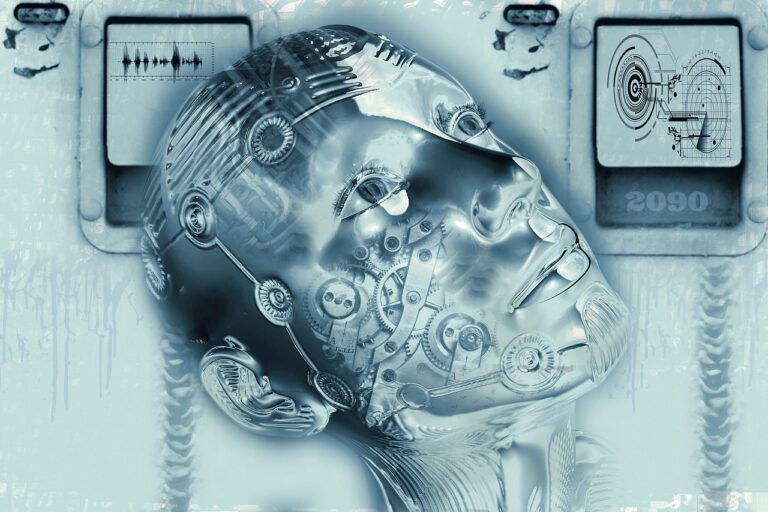Book Appointment Now

Roy Adaptation Model and Rubin’s Theory of Maternal Identity
The Roy Adaptation Model and Rubin’s Theory of Maternal Identity are two influential nursing frameworks that address distinct but complementary aspects of patient care. While RAM provides a versatile approach to understanding adaptation in individuals across diverse health conditions, Rubin’s theory focuses on the psychological transformation women experience as they assume the maternal role. Together, these models underscore the importance of holistic, patient-centered care in nursing practice.
Roy Adaptation Model
Developed by Sister Callista Roy in 1976, the Roy Adaptation Model views individuals as dynamic, biopsychosocial beings who continuously interact with and adapt to environmental changes. RAM emphasizes the role of nurses in promoting health by enhancing the patient’s ability to adapt.
Core Components of the Roy Adaptation Model
The model revolves around the concept of adaptation, which is the process of responding to stimuli to achieve health and well-being. Stimuli are categorized into:
- Focal Stimuli: Immediate challenges, such as acute illness or injury.
- Contextual Stimuli: Surrounding factors that influence the individual, like emotional support or living conditions.
- Residual Stimuli: Background factors that may not be immediately apparent but still affect adaptation, such as cultural beliefs or past experiences.
RAM identifies four adaptive modes that shape an individual’s response to stimuli:
- Physiological-Physical Mode: Focuses on biological processes like oxygenation, hydration, and nutrition.
- Self-Concept Mode: Concerns an individual’s psychological integrity and self-perception.
- Role Function Mode: Examines societal roles and expectations, such as familial or occupational roles.
- Interdependence Mode: Highlights relationships and social support systems.
The model’s nursing process consists of assessing these adaptive modes, identifying stimuli, and implementing interventions to enhance adaptation.
Applications of RAM in Nursing
In acute care, RAM helps nurses support patients through sudden health challenges. For example, a post-surgery patient may require interventions to adapt physiologically (e.g., pain management) and emotionally (e.g., reassurance about recovery). In chronic illness management, the model is used to guide long-term adaptation strategies, such as teaching a patient with diabetes how to integrate self-care practices into their daily routine. RAM is also highly effective in mental health nursing, where it helps patients build resilience and maintain self-concept amidst psychological stressors.
Rubin’s Theory of Maternal Identity
Introduced by Reva Rubin in the 1960s, the Theory of Maternal Identity focuses on the unique psychological journey women undergo during pregnancy and early motherhood. Rubin’s work emphasizes that becoming a mother is not an instantaneous event but a process that unfolds over time as women internalize the maternal role.
Core Concepts of Rubin’s Theory
The theory identifies maternal role attainment as a dynamic process influenced by individual, social, and cultural factors. Rubin outlined four stages of maternal identity development:
- Commitment, Attachment, and Preparation: During pregnancy, the woman develops an emotional connection to the unborn child, supported by prenatal care and education.
- Acquaintance and Learning: In the early postpartum period, the mother adjusts to caring for her newborn and begins forming a strong bond.
- Moving Toward a New Normal: The mother integrates the maternal role into her identity, balancing it with other life responsibilities.
- Achievement of Maternal Identity: Over time, the maternal role becomes a stable and fulfilling aspect of the woman’s sense of self.
Factors influencing this process include:
- Personal Characteristics: Age, health status, and previous experiences.
- Support Systems: Family, healthcare providers, and peer networks.
- Cultural Expectations: Norms and values related to motherhood.
Applications of Rubin’s Theory in Nursing
Rubin’s theory is particularly useful in guiding nursing care for expectant and new mothers. During prenatal care, nurses can help women prepare for the maternal role by addressing their questions and concerns about childbirth and parenting. Postpartum care involves supporting mothers as they navigate challenges like breastfeeding, sleep deprivation, and bonding with their baby. Nurses also play a critical role in recognizing and addressing emotional challenges, such as postpartum depression, by providing emotional support and connecting mothers with resources.
Comparison of RAM and Rubin’s Theory of Maternal Identity
While both frameworks are rooted in holistic care, they focus on different aspects of patient experiences. RAM offers a broader perspective, applicable across all life stages and health conditions, emphasizing adaptation to environmental stimuli. In contrast, Rubin’s theory zeroes in on the maternal role, exploring the emotional and psychological transformation of motherhood.
| Aspect | Roy Adaptation Model (RAM) | Rubin’s Theory of Maternal Identity |
|---|---|---|
| Focus | Holistic adaptation to environmental stimuli. | Psychological transition to motherhood. |
| Core Concept | Adaptation through four adaptive modes. | Maternal role attainment as a gradual process. |
| Applicability | Broadly applicable across all health conditions. | Specific to pregnancy, postpartum, and early motherhood. |
| Nursing Goal | Enhance adaptation to improve health outcomes. | Support mothers in achieving a stable maternal identity. |
| Scope | Lifelong adaptation across physical, emotional, and social domains. | Time-specific, focusing on pregnancy and early motherhood. |
Integrating the Models in Nursing Practice
Both RAM and Rubin’s Theory of Maternal Identity have significant implications for nursing. For example, in caring for a pregnant woman with gestational diabetes, RAM helps nurses assess and address the woman’s physiological adaptation to blood sugar management, while Rubin’s theory focuses on her emotional preparation for motherhood. The integration of these models allows nurses to provide care that is both technically competent and deeply empathetic.
In mental health nursing, RAM may guide interventions to help a patient regain self-concept after trauma, while Rubin’s theory would be invaluable for supporting mothers experiencing postpartum depression. Together, these frameworks ensure that care is holistic and tailored to each individual’s unique journey.
The Roy Adaptation Model and Rubin’s Theory of Maternal Identity represent two pillars of nursing theory, each offering unique insights into patient care. RAM emphasizes the importance of adaptation across various health conditions, providing a versatile framework for holistic care. Rubin’s theory, on the other hand, focuses on the transformative journey of motherhood, highlighting the psychological and emotional aspects of the maternal role.
By integrating these models, nurses can deliver care that addresses both physical and emotional dimensions, ensuring a comprehensive and patient-centered approach. Whether helping patients adapt to chronic illness or supporting new mothers in their transition to parenthood, these theories provide invaluable tools for modern nursing practice.
References
- Roy, C. (1976). Introduction to Nursing: An Adaptation Model. Englewood Cliffs, NJ: Prentice Hall.
- Foundational text introducing the Roy Adaptation Model, detailing its principles, adaptive modes, and applications.
- Roy, C., & Andrews, H. A. (1999). The Roy Adaptation Model. Stamford, CT: Appleton & Lange.
- Comprehensive exploration of RAM’s development, theoretical underpinnings, and relevance in modern nursing.
- George, J. B. (2011). Nursing Theories: The Base for Professional Nursing Practice (6th ed.). Upper Saddle River, NJ: Pearson Education.
- Analysis of various nursing theories, including the Roy Adaptation Model and Rubin’s Theory of Maternal Identity.
- Rubin, R. (1967). Attainment of the maternal role. Nursing Research, 16(3), 237–245.
- Original article introducing Rubin’s Theory of Maternal Identity and its stages of maternal role attainment.
- Rubin, R. (1984). Maternal identity and the maternal experience. Journal of Nursing Scholarship, 16(4), 241–246.
- Explores the psychological processes influencing maternal identity development and its implications for nursing practice.
- Fawcett, J. (2005). Contemporary Nursing Knowledge: Analysis and Evaluation of Nursing Models and Theories. Philadelphia: F.A. Davis.
- In-depth evaluation of nursing frameworks, including the Roy Adaptation Model and Rubin’s Theory of Maternal Identity.
- Reed, P. G., & Shearer, N. B. C. (2017). Perspectives on Nursing Theory (6th ed.). Philadelphia: Wolters Kluwer.
- Provides insights into the theoretical foundations and practical applications of RAM and other nursing theories.
- Meleis, A. I. (2012). Theoretical Nursing: Development and Progress (5th ed.). Philadelphia: Wolters Kluwer Health.
- Discusses the evolution, critique, and application of key nursing theories, including those by Roy and Rubin.






